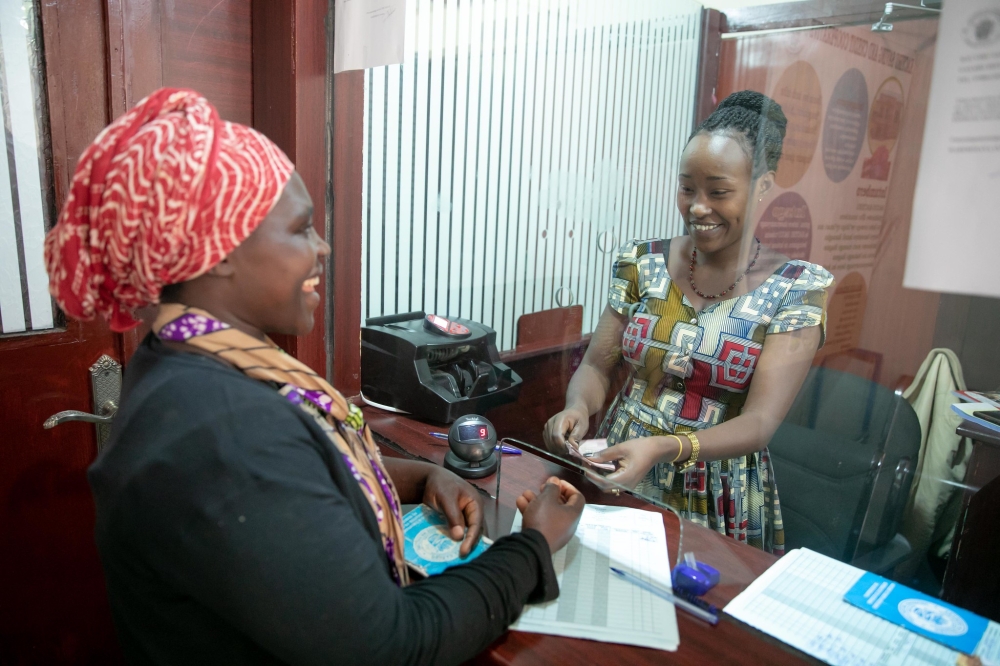

After the successful automation of 68 Umurenge Savings and Credit Cooperatives (SACCOs), the Ministry of Finance and Economic Planning announced that the full rollout across the country will be achieved by the end of June 2024.
It noted that an additional 99 SACCOs in the pipeline are expected to be automated by the end of June this year. There are 416 SACCOs across the country.
ALSO READ: Over Rwf2bn allocated for full automation of Umurenge SACCOs
According to data from the Finance Ministry, the Umurenge SACCOs automation and consolidation project, aimed at creating a cooperative bank, commenced in 2020 and is projected to be completed in 2024, with a budget of over Rwf7.8 billion
Kevin Kavugizo, Acting Director of U-SACCOs, MINECOFIN, explained that this will address the many challenges brought about by the manual operations of SACCOs, such as the prevalent human errors in recording data, money theft, and difficulties in generating reports.
ALSO READ: Govt to compensate Rwandans who lost savings in Umurenge SACCOs
Not forgetting the tiresome long queues that clients had to go through because of having to do everything with paper, and their forms would get lost along the way, he said.
"The digitisation will enhance service delivery in the microfinance institutions and with different products that will come with the system, they will be more attractive to the greater public.”
Kavugizo noted that there will be a range of digital products including the push and pull transfer on mobile wallets, among others.
In a broader picture, this adds up to the country’s efforts in driving financial inclusion and digital transformation where the majority of clients will be trained in digital and financial literacy.
SACCOs serve a big number of Rwandans mainly smallholder farmers, business people at the SME level, and people in remote areas where commercial banks have not yet reached.
Florence Nabada, Spokesperson of SACCO, said that this will allow account holders to make transactions at any branch without necessarily visiting the specific SACCO where the account was opened, and account holders will monitor their transactions.
However, MP Omar Munyaneza, the Chairperson of the Lower House’s Committee on National Budget and Patrimony, said that in order for the full automation of Umurenge SACCOs to be possible, MINECOFIN must ensure the effective execution of the budget allocated to the project in the current fiscal year, which concludes on June 30.
Additionally, they need to utilise the Rwf2.6 billion earmarked for the scheme in the next fiscal year.
ALSO READ: Automating SACCOs: Who is to blame for the failure?
According to MINECOFIN, an allocation of over Rwf3.5 billion was made for the project in the current fiscal year, but as of April 30, only 56 per cent (or over Rwf1.9 billion) of the funds had been utilised.
Minister of State in charge of the National Treasury at the Finance Ministry, Richard Tusabe, explained that the slow budget execution was primarily due to a lack of personnel responsible for monitoring the automation performance.
"We now have a team of software developers and business analysts. However, the challenge lies in acquiring auditors – those workers who collect clients’ forms from SACCOs and input them in the e-environment.
"This process was delayed, but we have made progress and believe that hiring 100 additional workers will help us expedite the project. Our goal is to have all SACCOs automated by the end of this year (December) and then allocate three months for consolidation at the district level so that each district has a comprehensive banking system,” he said.

